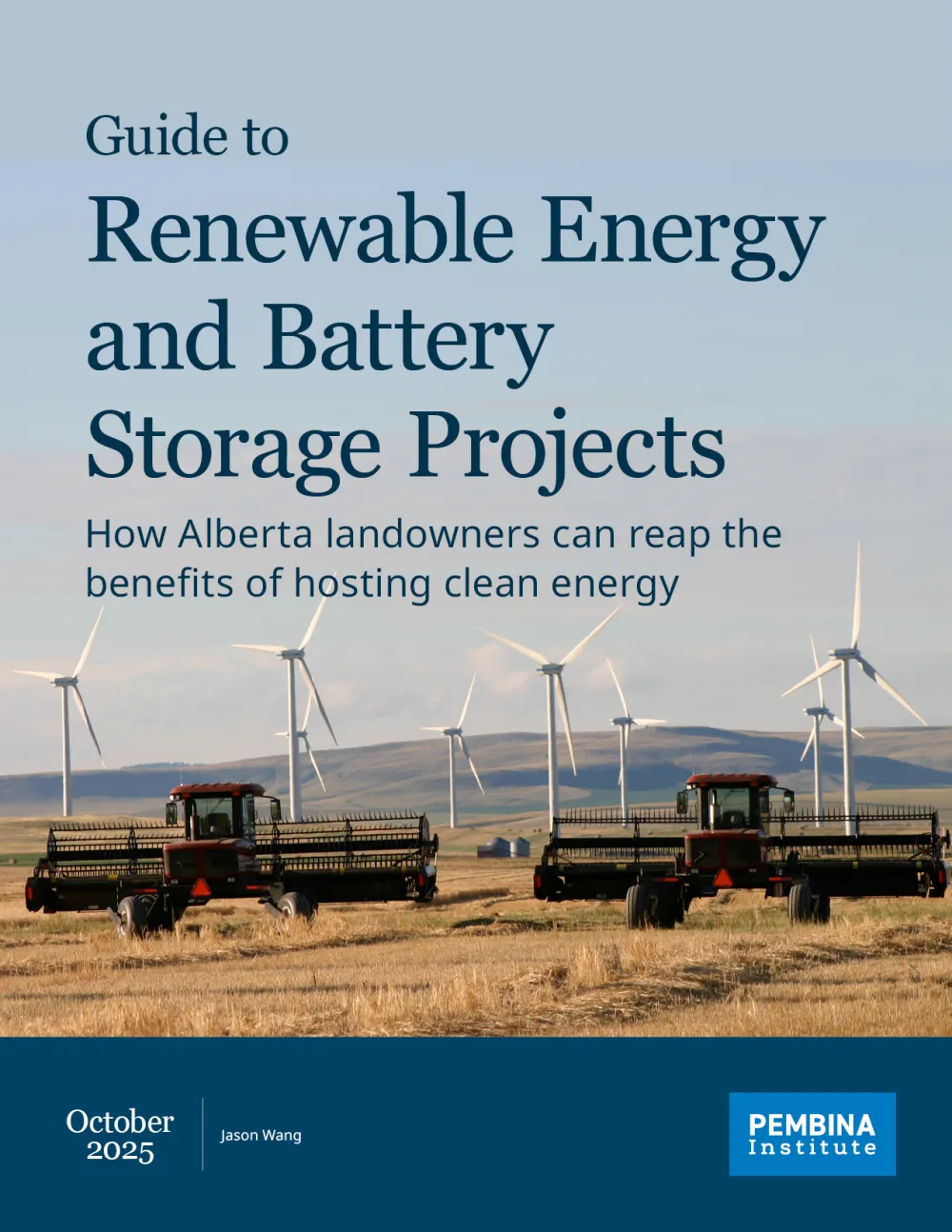EDMONTON — When landowners and municipalities consider hosting a wind or solar project on their land, they can be faced with the abrupt need to learn a lot of new information. A just-released guide from the Pembina Institute eases that process by covering everything from basics about renewables, to thoughts on how to help maximize benefits and minimize impacts.
The Guide to Renewable Energy and Battery Storage Projects also runs through the steps involved in a project, from finding a suitable project site to reclaiming that site. There’s a section for municipalities on how they can get involved in renewable energy development. And to wrap it all up, there are lists of questions on a variety of topics that offer solid starting points for conversations with developers proposing projects.
Landowners and communities can benefit tremendously when they host renewable energy projects, with public data from 2024 and 2025 suggesting that landowners’ lease payments for solar projects can range from $600 to $1,200 per acre. One landowner involved with the Travers solar project in Vulcan County likens the annual lease payments to a form of insurance that helps get family farms through increasingly common drought years.
Local communities benefit from increased tax revenue, too, as it helps fund essential services. They can also negotiate community benefit agreements that pay for common items on a community wish list, such as upgrades to recreational infrastructure like pathways, bridges and hockey arenas.
Recent Alberta government policies have created uncertainty around renewable energy in the province, but wind and solar remain the lowest-cost forms of new electricity generation, so landowners and communities are likely to have more opportunities to benefit from new project development. This guide will help them negotiate the process with developers and land a mutually beneficial deal.
Quick facts
- Wind and solar projects can result in significant extra revenue for landowners in Canada: recent public numbers suggest solar projects can generate $96,000 to $192,000 per quarter section in lease payments each year.
- In 2024, the Business Renewables Centre-Canada calculated that renewable energy projects in Alberta brought in $54 million in municipal tax revenues. For some communities, that income represents over a quarter of their total operating revenues.
Quotes
“If I would have had a resource tool like that back in 2017, that would have saved us months of discussion and research to try and figure things out.”
— Eric Steeves, fifth-generation farmer, Travers solar farm participant, and owner of Yetwood Farms
“Landowners who host wind and solar projects on their farms get an income-stabilizing boost to their bottom lines. And it’s not just farmers, but their neighbours and communities, too. Rural municipalities face more economic challenges now, as well, and many have received a revitalizing lift from the municipal tax revenues from renewable energy projects, which totaled $54 million last year.”
— Jason Wang, Senior Analyst, Pembina Institute
-30-
Contact
Hanneke Brooymans
Senior communications lead, Pembina Institute
587-336-4396
Background
Report: I'll Have What They're Having: Lessons learned from six jurisdictions leading in wind and solar deployment
Infographic: 2024 Alberta renewable energy municipal tax revenue map




